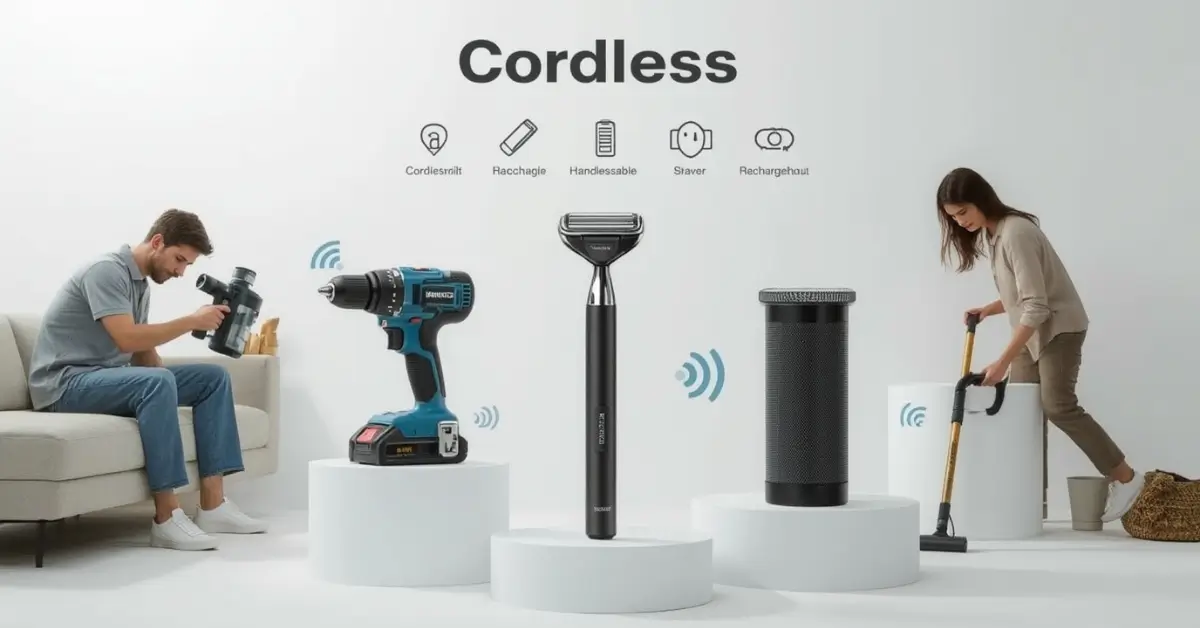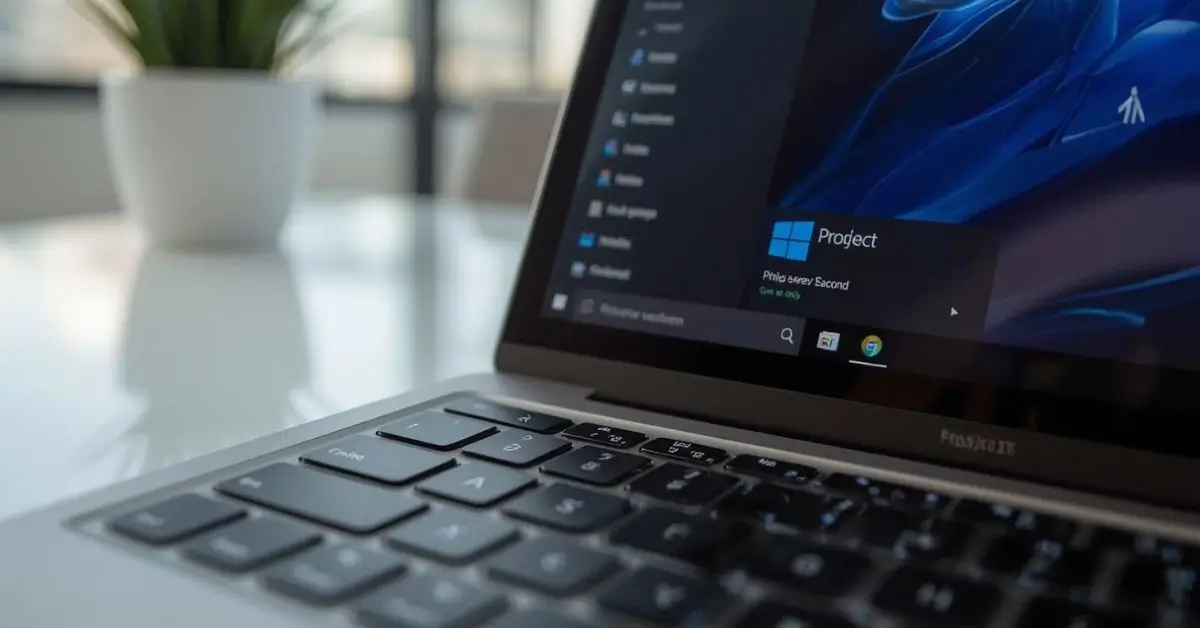TECH
Quick Guide: How to Easily Reset Your Acer Laptop

TECH
Top Cordless Gadgets That Make Life Easier

Wireless technology is the backbone of cordless living. Think about how Bluetooth headphones, Wi-Fi routers, and wireless charging pads have changed daily routines. No more cluttered desks, no more fumbling with tangled cables.
In 2025, wireless connectivity is faster, more secure, and more energy-efficient. Cordless devices are now designed to seamlessly sync with apps, smart homes, and even AI-powered assistants. Imagine asking your smart speaker to start your cordless vacuum before you arrive home. That’s no longer science fiction—it’s everyday life.
“The moment I switched to a cordless mouse and keyboard, my productivity skyrocketed. No wires, no frustration, just smooth flow.”
Rechargeable Battery: The Heart of Cordless Devices
If wireless tech is the skeleton, the rechargeable battery is the heartbeat of every cordless device. Over the past decade, battery innovation has accelerated. Lithium-ion and solid-state batteries now provide longer runtimes, faster charging, and improved safety.
The big shift in 2025? Eco-friendly battery solutions. Manufacturers are focusing on recyclable materials and reducing e-waste, making cordless devices not only convenient but also sustainable.
But not all batteries are equal. A cordless drill might need high torque and short charging times, while a cordless phone prioritizes standby longevity. Understanding battery capacity, measured in milliamp-hours (mAh), is essential before buying any cordless gadget.
Portable Devices: Convenience in Your Pocket
Cordless equals portable. From cord-free electronics like earbuds to battery-operated gadgets like travel blenders, consumers now demand mobility without compromise.
The portability factor has even influenced design. Devices are becoming slimmer, lighter, and more ergonomic. A handheld vacuum in 2025 can fit in your car’s glovebox yet deliver suction power that rivals traditional bulky vacuums.
This portability trend also highlights versatility. A cordless speaker, for instance, doubles as a home device and a travel companion, syncing with multiple devices at once.
Cordless Power Tools: A Contractor’s Best Friend
Ask any contractor or DIY enthusiast, and they’ll tell you: cordless power tools are game-changers. No one wants to drag extension cords across a construction site anymore.
Cordless drills, saws, and impact drivers now rival corded models in strength. Advanced brushless motors and high-capacity batteries allow professionals to work longer with fewer interruptions.
Even hobbyists benefit. A homeowner assembling furniture appreciates the convenience of a cordless drill that doesn’t require setup time. Power meets practicality, and that’s exactly why cordless tools dominate hardware stores today.
Cord-Free Electronics: Clean Design for Modern Living
Cord-free electronics aren’t just functional—they’re aesthetic. Walk into any modern office or living room, and you’ll notice minimalism. Designers are removing clutter, and cords are often the first to go.
Cordless phones may feel like old tech, but in 2025, they’ve reinvented themselves with smart integrations like call forwarding, video displays, and Wi-Fi calling. Similarly, cordless keyboards, mice, and chargers allow professionals to create clean, distraction-free workstations.
For consumers, it’s not only about looks but also about safety. No cords mean fewer tripping hazards and safer environments for kids and pets.
Battery-Operated Gadgets: Small But Mighty
Sometimes, it’s the little things that make life easier. Battery-operated gadgets like LED lights, mini fans, and portable massagers have exploded in popularity. They’re affordable, easy to use, and perfect for on-the-go lifestyles.
Take the example of travel toothbrushes with rechargeable batteries. They’re lightweight, hygienic, and USB-chargeable—ideal for digital nomads or business travelers. These devices might not have the “wow” factor of cordless drills or vacuums, but they solve small, everyday problems.
Handheld Vacuums: A Cordless Cleaning Revolution
No conversation about cordless is complete without mentioning handheld vacuums. The days of bulky, plug-in machines are fading fast.
In 2025, cordless vacuums rival traditional ones in suction power. They come with HEPA filters, smart sensors, and docking stations that automatically empty dust bins. For urban dwellers in small apartments or families with kids, the appeal is obvious: grab, clean, and recharge.
One user recently posted online: “Switching to a cordless vacuum saved me 20 minutes every morning. Now I clean while my coffee brews.” That’s the power of convenience.
Cordless Drill: The DIY Essential
Among cordless tools, the cordless drill stands out. It’s the most versatile, from fixing a door hinge to building a deck.
Today’s drills feature adjustable torque, LED lighting, and interchangeable bits. They’re also lighter, reducing strain on wrists. Even first-time users find them intuitive.
For professionals, cordless drills save time on the job. For homeowners, they eliminate the stress of finding a nearby power socket. The result? A tool that’s become a household staple.
Rechargeable Shaver: Grooming Without Limits
Personal care has gone cordless too. The rechargeable shaver is a prime example of blending technology with lifestyle needs.
Modern shavers offer waterproof designs, fast charging, and skin-sensitive blades. Some even come with AI-powered apps that track shaving patterns.
For frequent travelers, this is a blessing. No need to pack adapters or worry about voltage differences—just charge via USB-C and you’re good to go.
Cordless Phone: Still Relevant in 2025?
While smartphones dominate communication, the cordless phone still has its place. In many households and offices, they serve as reliable backup systems.
The latest models integrate with smart assistants, video conferencing, and VoIP calling. They also provide longer talk times and better range than older versions.
In rural areas where cell service drops, cordless landline phones remain vital. They’ve quietly adapted to the modern era without losing relevance.
The Pros and Cons of Going Cordless
Like any innovation, cordless devices bring both benefits and trade-offs.
Pros:
- Convenience and portability
- Sleek, clutter-free design
- Safer environments with fewer cables
- Continuous battery improvements
Cons:
- Dependence on battery life
- Higher upfront costs
- Occasional performance trade-offs compared to corded versions
- Sustainability concerns with battery disposal
The key is balance. Consumers must weigh convenience against durability and cost.
Real-Life Applications: How Cordless Devices Change Daily Routines
Consider this scenario: You wake up to a cordless alarm clock, brew coffee with a cordless kettle, and groom with a rechargeable shaver. You clean your living room using a handheld vacuum, then hop into the car where your phone charges wirelessly. At work, your cordless mouse, keyboard, and headset create a tidy, productive environment.
That’s not the future—it’s happening now. The seamless integration of cordless devices shows how deeply they’ve reshaped daily habits.
FAQ’s
Most modern batteries last between 500–1000 charging cycles. That translates to 2–5 years depending on usage. Proper care, like avoiding overcharging, can extend battery life.
Yes, in 2025 many cordless power tools deliver equal or greater torque thanks to brushless motors and advanced battery systems. The main difference is runtime, not strength.
Yes, cordless phones rely on a landline or VoIP connection, not Wi-Fi. However, many models now integrate Wi-Fi features for added functionality.
Lightweight handheld vacuums with docking stations are ideal. Look for models with strong suction, HEPA filters, and compact storage.
Conclusion
From cordless drills to handheld vacuums, the cordless revolution is here to stay. These devices aren’t just convenient—they redefine efficiency, design, and mobility. With advances in wireless technology and rechargeable battery innovation, the future looks brighter and lighter—literally, without cords.
TECH
How to Use Windows Key P for Multiple Displays

The Windows Key P function has become essential for professionals, students, and gamers in 2025. But what exactly does it do, and how can you master it to save time and avoid frustration? Let’s dive in.
Why Windows Key P Matters in 2025
Technology has evolved rapidly, and hybrid work, online classes, and multi-monitor gaming setups are now the norm. The ability to switch displays instantly is no longer just a “nice-to-have”—it’s a necessity.
Think about it: you’re about to start a client presentation, but your laptop won’t connect to the projector. Or maybe you’re gaming on one screen while monitoring Discord or Twitch chat on another. In both scenarios, fumbling through multiple display settings in Windows can waste valuable time.
That’s where Windows display shortcuts like Window Key P shine—they eliminate the guesswork and put control right at your fingertips.
What Does Windows Key P Do?
The Window Key P shortcut opens the Project menu in Windows, giving you four quick options:
- PC screen only – Displays content only on your main screen.
- Duplicate – Shows the same content on your laptop and external display (perfect for a presentation).
- Extend – Creates one large workspace across multiple screens.
- Second screen only – Turns off your laptop display and uses only the external screen.
This is why many call it the project screen shortcut in Windows—it’s built for speed and simplicity.
How to Use the Windows Display Shortcut
Using Windows Key P couldn’t be easier:
- Press Window Key + P simultaneously.
- The display sidebar will appear on the right.
- Select your desired mode with arrow keys or mouse.
That’s it—you’ve just mastered one of the most useful switch screen shortcuts in the Windows ecosystem.
Exploring Multiple Display Settings in Windows
While Window Key P gives you instant control, you might sometimes want more detailed customization. That’s when multiple display settings in Windows come into play.
Here’s what you can adjust:
- Resolution – Match each monitor’s native resolution.
- Orientation – Rotate one screen vertically for coding or reading.
- Scaling – Make text and icons easier to read.
- Primary display selection – Choose which screen holds your taskbar and main apps.
These features complement the dual monitor shortcut key, helping you fine-tune your setup for productivity or entertainment.
Duplicate or Extend Screen in Windows: Which Should You Choose?
One common dilemma users face is whether to duplicate or extend screen in Windows. Both have unique advantages:
| Mode | Best Use Case | Example |
|---|---|---|
| Duplicate | Presentations, teaching, or screen sharing | A teacher projecting slides from their laptop to a classroom projector. |
| Extend | Multitasking, gaming, and creative work | A video editor with timeline on one screen and preview on another. |
If you’re constantly switching, Windows Key P lets you jump between them instantly.
The Laptop Projector Shortcut: A Lifesaver for Presenters
Ever walked into a boardroom, plugged in your laptop, and panicked when nothing displayed? That’s when the laptop projector shortcut becomes a lifesaver.
By pressing Windows Key P and selecting Duplicate, you can mirror your laptop screen to a projector in seconds. This small trick has saved countless presenters from awkward delays.
In fact, one user once tweeted:
“I almost had a meltdown in class today, but Windows Key + P saved me. Instant projector setup = lifesaver.”
Relatable, right?
Dual Monitor Shortcut Key for Gamers and Power Users
Gamers, coders, and designers know the value of multiple displays. But reaching for settings mid-game or during a coding sprint is annoying. That’s why the dual monitor shortcut key is a game-changer.
With Window Key P, you can:
- Extend your game on one monitor while chatting or streaming on the other.
- Quickly switch to single-screen mode to save GPU resources.
- Set up a productivity hub with docs on one side and research on the other.
This isn’t just convenience—it’s performance efficiency in real time
Screen Mirroring Windows Shortcut for Home and Office
Screen mirroring isn’t just for presentations anymore. In 2025, people use the screen mirroring Windows shortcut for:
- Streaming a Netflix show from laptop to TV.
- Sharing content during hybrid work meetings.
- Displaying mobile content on larger monitors (via wireless display support).
Thanks to Window Key P, you don’t need third-party tools—just press and project.
How to Extend Display in Windows Like a Pro
Extending your display is more than just extra screen space—it’s a productivity hack. Here’s how to make the most of it:
- Press Windows Key P → choose Extend.
- Open Display Settings to rearrange monitors.
- Position them physically the way they appear on your desk.
- Drag apps across seamlessly.
This feature turns your workspace into a digital canvas—perfect for graphic designers, video editors, or stock traders.
Presentation Mode Shortcut: Smooth Professionalism
If you’re a frequent presenter, the presentation mode shortcut via Windows Key P ensures smooth transitions. But here’s an extra tip:
- Use Duplicate for simple slideshows.
- Use Extend if you want speaker notes on your laptop while the audience only sees slides.
This dual-functionality makes it the ultimate professional hack in classrooms, boardrooms, and conferences.
The Psychology of Speed: Why Shortcuts Save You
Every time you skip menus with a shortcut, you’re not just saving clicks—you’re reducing cognitive load. Studies show that keyboard shortcuts can save up to 8 days of productivity per year for regular computer users.
In other words, mastering something as small as Windows Key P can compound into real, measurable efficiency gains.
Troubleshooting: When Windows Key P Doesn’t Work
Sometimes, things don’t go as planned. If the Windows Key P shortcut isn’t responding, here’s what to check:
- Ensure your external monitor or projector is connected properly.
- Update display drivers.
- Restart Windows Explorer.
- Test with another HDMI or VGA cable.
- Verify that your GPU supports multiple displays.
In rare cases, you may need to re-enable hotkeys in Windows settings.
Pros and Cons of Windows Key P
Like any tool, Windows Key P has strengths and limitations:
Pros
- Instant screen switching.
- Works across Windows 10, 11, and beyond.
- Saves time in professional and casual use.
- No third-party software needed.
Cons
- Limited customization (only four options).
- Can fail with outdated drivers.
- Shortcut may conflict with some software overlays.
Real-World Applications in 2025
- Remote Work: Seamlessly switch between home monitor and laptop screen.
- Education: Teachers project lessons instantly without setup delays.
- Gaming: Dual screens for Discord, OBS, or walkthrough guides.
- Business: Pitch decks run smoothly with the project screen shortcut in Windows.
It’s clear—this shortcut isn’t just a trick, it’s an everyday essential.
FAQ’s
It opens the display options menu, letting you switch between duplicate, extend, or second-screen modes instantly.
Press Windows Key P and select Extend. You can then drag apps and windows across multiple screens.
Check your display connection, update drivers, and restart Windows Explorer. Sometimes hardware compatibility is the issue.
Yes. If your device supports Miracast or wireless projection, you can use the shortcut to mirror or extend wirelessly.
Conclusion
The Windows Key P shortcut might look simple, but it’s one of the most powerful tools in Windows for multitasking, presenting, and entertainment. Whether you’re projecting slides, extending displays for creative work, or mirroring content at home, this shortcut saves time and stress.
TECH
Thejavasea Exposed: The Shocking Truth Behind Massive Data Leaks

At its core, thejavasea refers to a leak repository known online for hosting large-scale AIO-TLP leaks. These archives contain sensitive personal data, ranging from usernames and passwords to emails, addresses, and in some cases, even financial information.
Unlike mainstream news about data breaches, which usually highlight corporate mishandling of information, thejavasea focuses on community-driven sharing of breach data. Think of it as a hub where dark web leaks are collected, stored, and circulated.
The Rise of AIO-TLP Leaks
One of the most notable features tied to thejavasea is the concept of AIO-TLP leaks. The acronym stands for “All-In-One – Traffic Light Protocol.” It’s essentially a categorization system used by the cybersecurity underground to mark the sensitivity of leaked data.
- AIO means the leak contains massive bundles of data, often spanning multiple platforms.
- TLP refers to the “traffic light protocol” classification, which defines how restricted or open the shared data is.
In 2025, AIO-TLP leaks have become infamous for being among the most comprehensive archives available—some even labeled by identifiers like AIO-TLP287.
Why Should You Care About thejavasea?
It’s easy to think this only concerns hackers or cybersecurity professionals. But here’s the truth: anyone with an online account could be at risk. If you’ve ever signed up for social media, an online shop, or a newsletter, there’s a chance your data is sitting in one of these archives.
A user once shared on a forum:
“I searched my email in thejavasea leak archive, and to my horror, my old gaming account and even a work login showed up. It’s scary to think how much of our digital footprint is floating around out there.”
That’s why personal data exposure isn’t just a buzzword—it’s a real risk that can lead to phishing attacks, identity theft, or even financial fraud.
Anatomy of a Data Leak Archive
Let’s break down what you’ll typically find in a thejavasea leak repository:
- Email addresses and usernames: Often used for credential stuffing attacks.
- Passwords (hashed or plain-text): The most dangerous element if reused across accounts.
- Phone numbers and addresses: Fuel for targeted scams and phishing.
- Financial details: Credit cards or banking data (though less common, still found).
- Metadata: Device IDs, IP addresses, and logs.
This data doesn’t always appear in a neatly packaged spreadsheet. Many dark web leaks are messy dumps requiring technical know-how to navigate.
The Legal Implications of thejavasea Leaks
While data leak monitoring is essential for individuals and organizations, accessing or downloading information from thejavasea.me leaks crosses a fine legal line. Depending on your jurisdiction, simply viewing or downloading stolen data can violate privacy protection laws.
Authorities in 2025 are tightening regulations around data breach repositories, with some countries even labeling platforms like thejavasea as cybercrime facilitators. This means interacting with leaked archives isn’t just risky—it could also land you in legal trouble.
Real-World Impacts of Personal Data Exposure
The consequences of having your information in a thejavasea leak archive can be devastating:
- Identity theft: Fraudsters can open accounts, loans, or services in your name.
- Phishing scams: Hackers tailor emails or texts to trick you into clicking malicious links.
- Financial fraud: Even partial credit card or banking details can lead to stolen funds.
- Reputation damage: For professionals, leaked private communications can impact careers.
- Account takeovers: Using exposed passwords, attackers can hijack your social media or work accounts.
How Cybersecurity Experts Monitor Leaks Like thejavasea
Organizations today rely on data leak monitoring tools to detect exposure early. These tools constantly scan repositories like thejavasea for stolen credentials. Once a match is found, they alert users to take action.
Some popular methods include:
- Breach detection services like Have I Been Pwned (HIBP)
- Dark web monitoring tools provided by cybersecurity vendors
- Custom alerts for specific domains or company emails
By staying proactive, companies can respond before criminals exploit the leaks.
Privacy Protection in the Age of thejavasea
As cybersecurity threats evolve, so must our defenses. Here are practical steps you can take to safeguard against data leaks:
Use Strong, Unique Passwords
Avoid reusing the same password across accounts. Tools like password managers can generate and store complex ones for you.
Enable Multi-Factor Authentication (MFA)
Even if your password is leaked, MFA can block unauthorized access.
Monitor Your Accounts
Set up alerts for logins, unusual activity, or financial transactions.
Freeze or Lock Credit When Needed
If you suspect financial exposure, freezing your credit can prevent identity theft.
Stay Educated
Awareness is your best defense. Keep up with the latest trends in information security and leak mitigation.
Example of a Corporate Breach Connected to Leak Archives
Consider a mid-sized retail company that suffered a breach in 2024. Their customer database—emails, addresses, and hashed passwords—eventually appeared in thejavasea leak repository. Months later, customers began reporting phishing emails and fraudulent credit card charges.
The company had to issue mass notifications, pay regulatory fines, and hire a data security firm. The total financial impact exceeded \$3 million. This case demonstrates how quickly dark web leaks can move from hidden archives to real-world damage.
Leak Mitigation Strategies for Businesses
Companies must take a proactive stance to reduce risks:
- Regular Security Audits: Identify vulnerabilities before attackers do.
- Employee Training: Teach staff to recognize phishing and data handling best practices.
- Incident Response Plans: Have a playbook ready when a breach occurs.
- Partnerships with Cybersecurity Firms: Outsourcing monitoring and response improves resilience.
- Data Minimization: Store only what’s necessary to reduce exposure.
The Future of Leak Archives in 2025 and Beyond
Cybercrime is an arms race. As platforms like thejavasea evolve, so too will defenses. Emerging technologies such as AI-powered leak detection, blockchain for secure identity management, and biometric logins are already reshaping the landscape.
However, experts warn that data leak archives aren’t going away anytime soon. If anything, they’re becoming more sophisticated, decentralized, and harder to track. That’s why both individuals and businesses need to adopt a privacy-first mindset.
FAQs
What is thejavasea.me leaks archive?
The thejavasea.me leaks archive is a collection of exposed data from various breaches, stored and shared on underground forums. It’s widely discussed in cybersecurity communities.
Is it illegal to access AIO-TLP leaks from thejavasea?
Yes, in many jurisdictions, downloading or sharing data from AIO-TLP leaks can be considered illegal and a violation of privacy laws.
How can I check if my data is in thejavasea leak repository?
You can use data leak monitoring tools or public services like Have I Been Pwned. Some cybersecurity companies also offer personalized scans.
What should I do if my data appears in thejavasea archive?
Change your passwords immediately, enable MFA, monitor financial accounts, and consider credit freezes. Businesses should notify affected parties and follow data breach laws.
Final Thoughts
The world of thejavasea is a reminder of how fragile our digital lives can be. With data breaches and personal data exposure on the rise, it’s more important than ever to stay vigilant. Whether you’re an individual safeguarding your identity or a business protecting customers, knowledge is your first line of defense.
-

 BLOG2 months ago
BLOG2 months agoShocking Gasp GIFs – Top 9 Picks
-

 ENTERTAINMENT3 months ago
ENTERTAINMENT3 months agoTwitter Rate Limit Exceeded: What It Means and How to Fix It Fast
-

 BLOG3 months ago
BLOG3 months agoUnmasking the Risks: AI Face Swap in NSFW Content
-

 BLOG4 months ago
BLOG4 months agoRagdoll Archers Unblocked: Chaos in Every Shot
-

 BLOG3 months ago
BLOG3 months agoMark Spaeny: Tailoring Success and Raising a Star
-

 BLOG3 months ago
BLOG3 months agoCecil Souders: From Gridiron Glory to Wartime Hero
-

 BLOG3 months ago
BLOG3 months agoHidden Gems: The Rarest Basketball Cards Ever Found
-

 GAME4 months ago
GAME4 months agoAurora Resupply GTA 5 Guide for PS4 Players
